Review: 2012 Kia Sportage SX

Kia’s mission in America over the past decade was to compete squarely with the likes of Honda and Toyota. Lately however, the plucky South Korean brand seems to have larger aspirations. With the new Optima and Sportage turbos it would appear that Kia may just have budget near-luxury brands in mind as competition. Competition is fierce in the CUV market and the cute-ute segment is especially cut-throat with (by my count) no fewer than 11 vehicles that more-or-less compete directly with the Sportage. Among the main competition lurk the likes of the Rav 4, CR-V, Rogue, Juke, Compass, Patriot, Escape, Tiguan, Equinox, RDX and possibly the Q5.
However the 260HP turbo Sportage SX is possibly a different beast, and if you were to whittle this list down to just the 200HP+, turbocharged competition the list gets considerably shorter: Tiguan, Q5 and RDX. As Kia continues their claw upmarket, it should come as no surprise that Acura’s baby crossover should be found in Kia’s crosshairs. The question is: does the Sportage have what it takes to convince entry-level luxury CUV shoppers to stop at the Kia dealer? Or is this just faster competition for the RAV 4 and CR-V? Michael Karesh was able to get a Sportage SX turbo for a day from a local dealer, but what’s it like for a week? Lets find out.
From the outside, the new Sportage strikes a much more aggressive pose than the outgoing model. The clean lines and angular styling echo many of Acura’s latest design cues without being as “me-too” as previous Kia products. The large corporate grill looks at home on the Sportage and possibly better suited to the compact CUV than some of the other products that wear this nose. While styling opinions vary, one thing seems to be universal: the Sportage’s proboscis is far more attractive than Acura’s ungainly beak. In addition to the new engine, the SX model also gets large 18-inch wheels, a unique grill, dual exhaust, tweaked sills, aluminum door scuff plates, a different instrument cluster and some optional unique interior trim. Oh, and that T-GDI badge on the rear hatch.
The new Sportage’s interior was something of a let-down after spending a week inside the new Optima. That’s not to say the Sportage’s interior isn’t competitive, it’s just not class leading the way the new Optima SX is. Compared to other new Kia products, there are fewer soft touch plastics and no stitched-dash-trim bits to be found. Still, the interior is notably better than the majority of the competition in truth only a notch behind the likes of the more expensive Acura RDX. Even the new CR-V we crawled around inside during our coverage of the LA Auto Show only matches the Kia in interior refinement. Lesser Sportage trims are available in a two-tone grey motif that looks decidedly up-market, the SX model however is available only in black, however the black-on-black-on-black interior of our test car made the interior feel a bit too cold and dark for my tastes. The daring black and orange we saw on the 2011 model seems to have found few homes and is sadly no longer available. In comparison the interior of the RDX is a higher rent for sure, but the difference is mostly in design rather than component quality as the plastics inside the RDX are no more inspiring than the Kia. The RDX serves up similar proportions to the Kia but offers a modest 1.7 cubic feet more cargo room than the Sportage.
As is often the case with specialty trim-lines, it’s what’s under the hood that makes the SX worth the second look (and possible competition for the near luxury crowd). While the base Sportage gets by with a naturally aspirated 2.4L four-cylinder Hyundai/Kia Theta engine good for a middling 176HP and 168lb-ft of torque, the Sportage SX gets the new 2.0L turbocharged four-cylinder direct-injection engine from the new turbo Optima and Sonata. The new forced induction mill is tuned for 260HP at 6,000RPM and a beefy 269 lb-ft of torque from 1,850-3,000RPM. Like many turbo engines, the SX’s torque curve is flat, but unlike many turbo engines on the market it tapers off somewhat quickly at the top end. Compared to the heavy hitters in the near luxury segment, the SX tops the forced induction group with VW’s 2.0L turbo delivering 200HP and 206lb-ft of torque, Audi’s 2.0L cranking out 211HP/258lb-ft, and the RDX ‘s 2.3L turbo delivering 240HP/260lb-ft. The Theta turbo also delivers arguably more punch than the Q5’s 3.2L V6 or BMW’s naturally aspirated 3.0L inline-6. The cost for this extra punch? $2,500 more than a comparably equipped Sportage EX.
The RDX and other compact near-luxury CUVs sell on acceleration, sporty handling with a modicum of cargo capacity while the mass-market CUVs seem to focus mostly on upright seating, and this is where the Sportage seems to straddle the fence. Out on the road the light weight (3,466lb vs 3931 for the RDX), stiff chassis and wide 235-series 18-inch rubber conspire to make the Sportage a near equal to the RDX (or dare I even say EX35) when the going gets twisty despite not having Acura’s slick torque-vectoring SH-AWD system. Kia fitted their latest electric power-steering system to the Sportage SX which provides more road feel and feedback than I had expected. When throwing the baby-SUV into corners, the Sportage compares favorably with the premium compact CUVs on the market. What little the Sportage SX gives up to the RDX in handling, it makes up for it in straight line performance running to 60MPH 0.3 seconds faster than the RDX turbo and finishing the quarter-mile 0.4 seconds faster as well. The SX also ran to sixty 0.4 seconds faster than a 2011 AWD RAV 4 I got my hands on, and 0.7 seconds faster than the Audi Q5 2.0T we tested in April.
Directing the power to the tarmac is the Hyundai/Kia 6-speed automatic transmission and an optional AWD system. Much like the RDX however, AWD is essential if you care about on-road performance as the turbo brings the torque to a boil quickly. (A FWD model we tested suffered from wheel hop and severe front-wheel-peel at the merest press of the go pedal). Kia’s AWD system uses a center clutch pack (rather than a true center differential) that can connect or disconnect the rear wheels at will but (unlink SH-AWD) will never send more than 50% of the power to the back. Sadly Kia chose not to snag the Optima SX’s paddle shifters for use on the Sportage SX, nor did the slightly sportier transmission programming make a cameo. When driven hard, the transmission is eager to down-shift to do your right-foot’s bidding, but its just as eager to up-shift as you brake to enter the next curve. While Kia does provide a manumatic mode, it is a bit slow to react and without paddle shifters, its less convenient to use as well. The RDX’s 5-speed transmission is more willing to dance and the shift paddles make commanding (and staying in) a particular gear easier.
Now to the nitty-gritty: While the base, naturally-aspirated, FWD Sportage starts at a reasonable $18,500, stepping up to the SX turbo with AWD will cost you an extra $9,900, bringing your total to $28,400. The FWD SX may be $2,000 cheaper and deliver 2 more highway MPGs, but trust me, powering all four wheels is worth both costs. Besides, if you cared about economy you’d be buying the base FWD Sportage anyway. Our tester also wore the $2,000 premium package which gets you the panoramic sunroof, power mirrors with turn-signals, auto-dimming rear-view mirror, heated front seats and a cooled driver’s seat. The $1,000 navigation system option bumped our as-tested price to a somewhat steep $32,200. While I (like many of you) gasped at the total, a quick trip to my local Honda and Toyota dealers revealed the Sportage SX is actually a hair cheaper than a comparable RAV-4 (5 seater). Adjusting for options and the engine upgrade, the Sportage SX costs about the same as Honda’s CR-V, but is a significant $6,680 cheaper than a comparably equipped RDX which starts at $32,895 and comparably equipped (to our fully-loaded tester) rings in at $37,995.
There was a time where Kias were the cheap option, once that age ended, Kias became the value option, and today Kia has become a mainstream player. The Sportage is a perfect example of this transition, when Kia’s Sportage rolled into the light in 1993, it was cheap, and, well, cheap. The second generation Sportage was a value option to the main-stream shopper and as such, its faults could be forgiven because of its price. The base Sportage seems to slot firmly in the mainstream CUV line-up with competitive pricing, competitive features and average performance. Meanwhile, the Sportage SX seems to aspire to the near-luxury segment, trying to sell on handling and acceleration. While I’m not 100% sure the Sportage is ready to lock swords with Acura on the CUV battlefield, it is a very solid alternative for CUV shoppers. Of course, I value the “deal” so while the RDX is still the better small crossover, the Sportage SX is a close second and my personal choice, it’s just not quite near-luxury material yet. Wait till the fourth generation for that.
Kia provided the vehicle for our review, insurance and one tank of gas.
Statistics as tested
0-60: 6.1 Seconds
1/4 Mile: 14.6 Seconds @ 96 MPH
Fuel Economy: over 629 miles, 23.0MPG

More by Alex L. Dykes
Latest Car Reviews
Read moreLatest Product Reviews
Read moreRecent Comments
- MaintenanceCosts Nobody here seems to acknowledge that there are multiple use cases for cars.Some people spend all their time driving all over the country and need every mile and minute of time savings. ICE cars are better for them right now.Some people only drive locally and fly when they travel. For them, there's probably a range number that works, and they don't really need more. For the uses for which we use our EV, that would be around 150 miles. The other thing about a low range requirement is it can make 120V charging viable. If you don't drive more than an average of about 40 miles/day, you can probably get enough electrons through a wall outlet. We spent over two years charging our Bolt only through 120V, while our house was getting rebuilt, and never had an issue.Those are extremes. There are all sorts of use cases in between, which probably represent the majority of drivers. For some users, what's needed is more range. But I think for most users, what's needed is better charging. Retrofit apartment garages like Tim's with 240V outlets at every spot. Install more L3 chargers in supermarket parking lots and alongside gas stations. Make chargers that work like Tesla Superchargers as ubiquitous as gas stations, and EV charging will not be an issue for most users.
- MaintenanceCosts I don't have an opinion on whether any one plant unionizing is the right answer, but the employees sure need to have the right to organize. Unions or the credible threat of unionization are the only thing, history has proven, that can keep employers honest. Without it, we've seen over and over, the employers have complete power over the workers and feel free to exploit the workers however they see fit. (And don't tell me "oh, the workers can just leave" - in an oligopolistic industry, working conditions quickly converge, and there's not another employer right around the corner.)
- Kjhkjlhkjhkljh kljhjkhjklhkjh [h3]Wake me up when it is a 1989 635Csi with a M88/3[/h3]
- BrandX "I can charge using the 240V outlets, sure, but it’s slow."No it's not. That's what all home chargers use - 240V.
- Jalop1991 does the odometer represent itself in an analog fashion? Will the numbers roll slowly and stop wherever, or do they just blink to the next number like any old boring modern car?
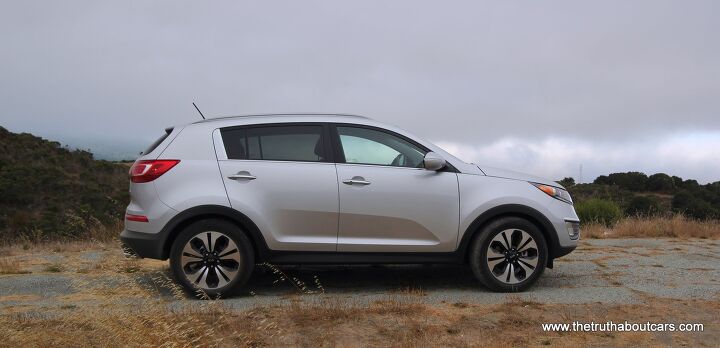






















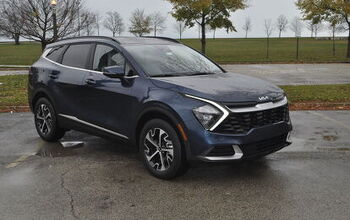
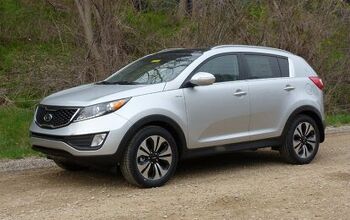

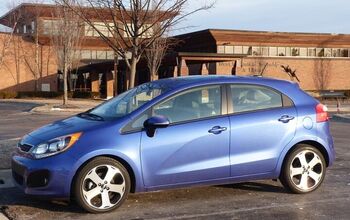
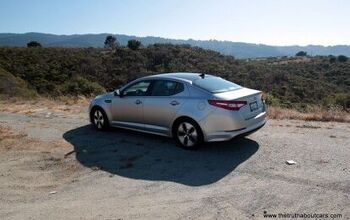










Comments
Join the conversation
Speaking of CUVs, what about the Toyota Venza V6? You can get loaded models around $30K, offering equal to better straight line performance.
I have seen a lot of strange and expected problems with 3-4 year old Kias. Flaking paint, flaking alloy wheels that are corroding, warped brake rotors, electrical gremlins, poor paint quality, rusted door seams, hard to open passenger doors, rusted A- pillars etc so for all those that claim they are superior to Pontiac i have to raise the BS flag. That obviously cheapened black lung interior would be a deal breaker for me on this odd looking ride.